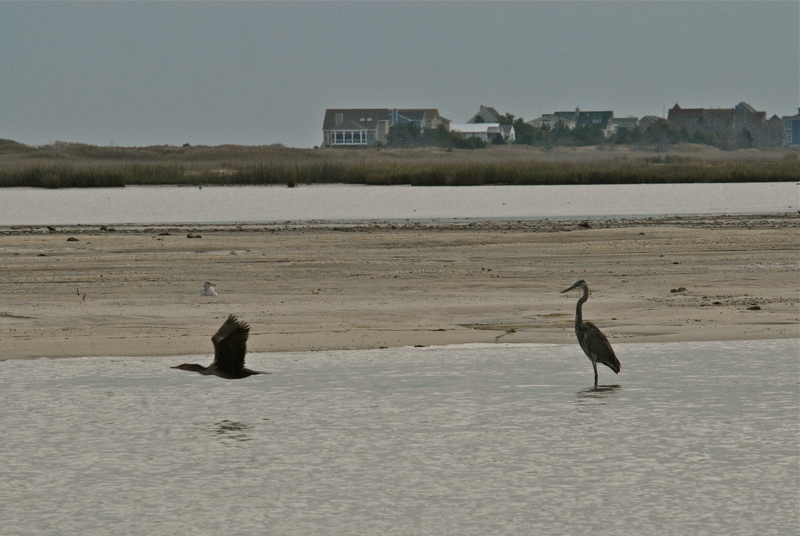Officials warned that repairs to the breaches along the shoreline of Prime Hook National Wildlife Refuge would be a temporary fix. They didn’t anticipate the Fowler Beach breaches would be reopened just a few days after the project was finished.
A full-moon high tide combined with wind Oct. 11-12 to erode away sand and wash out most of the work done by a Department of Natural Resources and Environmental Control crew. The project cost about $20,000.
No new repairs are planned in the near future. “In the near term there will likely not be more work,” said DNREC Deputy Secretary David Small. “As to the longer term question, that’s open for discussion.”
DNREC officials were not surprised that the breaches were overwashed. “The bottom line is there is insufficient sand on site to provide protection,” Small said. “It’s not a shock to anyone, but it is disappointing that the weather did not cooperate.
“We were able to close the breaches, but there was no guarantee with the work and who knew how long they would hold up,” Small said. “With sea-level rise and more storms, over time this will continue to be an issue.”
Trucking in additional sand, a suggestion made by residents of nearby Primehook Beach, does not appear to be feasible, according to Small. He said the main road leading to the area – Fowler Beach Road – would not stand up to heavy truck traffic.
Small said studies are under way to address sustainability issues along the Delaware Bay coastline. In addition, U.S. Fish & Wildlife Service is in the process of finishing its long-term conservation management plan to address issues affecting Prime Hook National Wildlife Refuge.
Even so, Small said when it comes to Prime Hook Refuge breaches, there are more questions than answers. Factor in safety issues presented by flooding of nearby Prime Hook Road and Primehook Beach, and the matter becomes more complicated. “What is the taxpayer’s responsibility in an area with limited infrastructure, a few people and a few visitors? What kind of investments should or need to be made?” he asked.
PEER: Didn’t take long for overwashes
Public Employees for Environmental Responsibility, one of two environmental groups that filed a lawsuit to stop the project, was quick to criticize the action.
“After only four days, the first full-moon high tide overwashed this project – it didn’t even take a storm to knock it out,” said PEER lawyer Kathryn Douglass. “Astoundingly, it appears that both the state and federal experts knew that there was not enough sand on the beaches but proceeded anyway.”
PEER and Delaware Audubon tried to stop the project and ultimately brought a federal lawsuit charging that it violated the National Environmental Policy Act. “The magistrate ruled that the project could proceed, but Mother Nature proved far more eloquently than our legal briefs that this project would not accomplish its intended purpose,” Douglass said. “Besides being a colossally bad idea, the project sets a horrible precedent of damaging federal wildlife refuges to further private interests.”
PEER is seeking DNREC records detailing how much taxpayer money was spent and whether top state officials knew the project was doomed to failure before starting the bulldozers.





















































